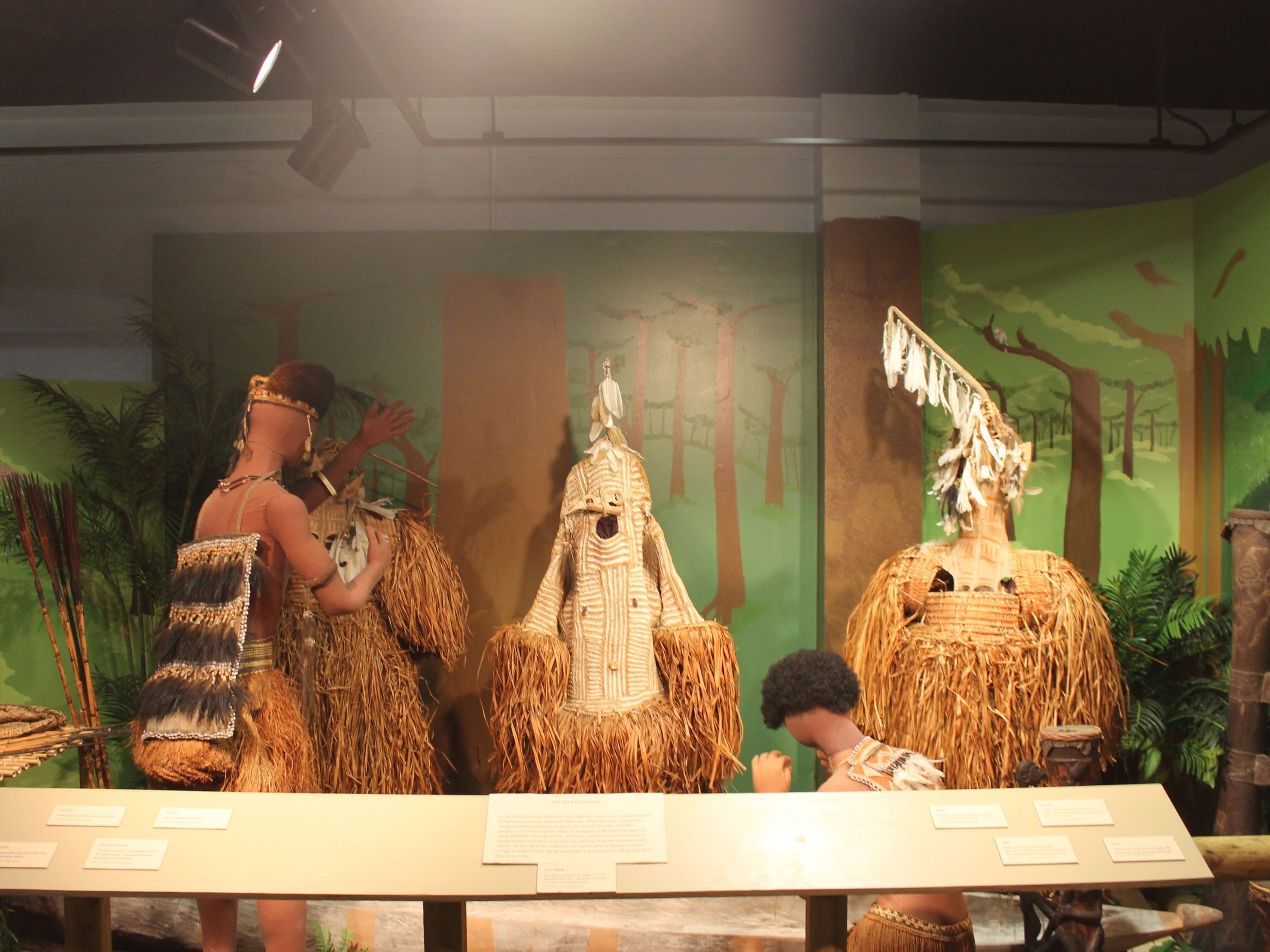The Jiwa Ceremony
In the Jiwa ceremony, adult male tribe members wear woven masks designed to represent a recently deceased tribesman. When the mask is put on the wearer becomes the deceased man in the eyes of the tribe. The tribe members will treat the mask wearer as though he is the dead man and will weep and make offerings to him. The mask wearer will visit the house of the deceased man where he will receive offerings from the deceased man's family. At the end of the ceremony the mask wearer is chased out of the village in order to chase the deceased man's spirit from the village and allow him to move on.
Jiwa Masks
Body mask crocheted from strings of twisted bark fiber called "fum". Decorated with feathers, coix seeds, and sago palm fibers.
2001.10.844, 2001.18.043, 2001.18.044a,b The Lowell D. Holmes Museum of Anthropology
Bowl
Bowl carved out of sago palm wood and used in different ceremonies.
The Downing Collection of Asmat Art
2001.10.243 The Lowell D. Holmes Museum of Anthropology
Drums
Carved wooden drums with lizard skin heads. Drums are the main instruments used in Asmat ceremonies.
The Downing Collection of Asmat Art
2001.10.923, 934, 884 The Lowell D. Holmes Museum of Anthropology
Bags
Bags woven from sago palm fronds. Decorated with pigments and feathers, bags are important status symbols for the Asmat.
The Downing Collection of Asmat Art
2001.10.031, 2001.10.413 The Lowell D. Holmes Museum of Anthropology
Axe
Wooden axe handle and stone blade. The bottom tip is shaped like a hornbill head.
The Downing Collection of Asmat Art
2001.10.294a,b The Lowell D. Holmes Museum of Anthropology
Fish Net
Large hoop net used by women for fishing.
The Downing Collection of Asmat Art
2001.10.565 The Lowell D. Holmes Museum of Anthropology
Arrows
Arrows used for bird hunting.
The Downing Collection of Asmat Art
2001.10.671a-f The Lowell D. Holmes Museum of Anthropology
Sago Carrier
Container made from sago tree. Lined with coix seed and feather tassels.
The Downing Collection of Asmat Art
2001.10.221 The Lowell D. Holmes Museum of Anthropology
Bow and Arrows
The bow and arrow is an important item in the Asmat culture. The men rarely leave their homes without them.
The Downing Collection of Asmat Art
2001.10.236a-f The Lowell D. Holmes Museum of Anthropology


